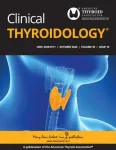(Press-News.org) ITHACA, N.Y. –Things may not have ended well for dinosaurs on Earth, but Cornell University astronomers say the “light fingerprint” of the conditions that enabled them to emerge here provide a crucial missing piece in our search for signs of life on planets orbiting alien stars.
Their analysis of the most recent 540 million years of Earth’s evolution, known as the Phanerozoic Eon, finds that telescopes could better detect potential chemical signatures of life in the atmosphere of an Earth-like exoplanet more closely resembling the age the dinosaurs inhabited than the one we know today.
Two key biosignature pairs – oxygen and methane, and ozone and methane – appeared stronger in models of Earth roughly 100 million to 300 million years ago, when oxygen levels were significantly higher. The models simulated the transmission spectra, or light fingerprint, generated by an atmosphere that absorbs some colors of starlight and lets others filter through, information scientists use to determine the atmosphere’s composition.
“Modern Earth’s light fingerprint has been our template for identifying potentially habitable planets, but there was a time when this fingerprint was even more pronounced – better at showing signs of life,” said Lisa Kaltenegger, director of the Carl Sagan Institute (CSI) and associate professor of astronomy. “This gives us hope that it might be just a little bit easier to find signs of life – even large, complex life – elsewhere in the cosmos.”
Kaltenegger is co-author of “Oxygen Bounty for Earth-like Exoplanets: Spectra of Earth Through the Phanerozoic,” published in Monthly Notices of the Royal Astronomical Society: Letters. First author, Rebecca Payne, research associate at CSI, led the new models that details a critical epoch including the origins of land plants, animals and dinosaurs.
Using estimates from two established climate models (called GEOCARB and COPSE), the researchers simulated Earth’s atmospheric composition and resulting transmission spectra over five 100-million-year increments of the Phanerozoic. Each features significant changes as a complex ocean biosphere diversified, forests proliferated and terrestrial biospheres flourished, influencing the mix of oxygen and other gasses in the atmosphere.
“It’s only the most recent 12% or so of Earth’s history, but it encompasses pretty much all of the time in which life was more complex than sponges,” said Payne. “These light fingerprints are what you’d search for elsewhere, if you were looking for something more advanced than a single-celled organism.”
While similar evolutionary processes may or may not unfold on exoplanets, Payne and Kaltenegger said their models fill in a missing puzzle piece of what a Phanerozoic would look like to a telescope, creating new templates for habitable planets with varying atmospheric oxygen levels.
Kaltenegger pioneered modeling of what Earth would look like to faraway observers based on changes over time in its geology, climate and atmosphere – our “ground truth,” she said, for identifying potential evidence of life on other worlds.
To date, about 35 rocky exoplanets have been discovered in habitable zones where liquid water could exist, Kaltenegger said. Analyzing an exoplanet’s atmosphere – if it has one – is at the edge of technical capability for NASA’s James Webb Space Telescope but is now a possibility. But, the researchers said, scientists need to know what to look for. Their models identify planets like Phanerozoic Earth as the most promising targets for finding life in the cosmos.
They also allow scientists to entertain the possibility – purely theoretical – that if a habitable exoplanet is discovered to have an atmosphere with 30% oxygen, life there might not be limited to microbes, but could include creatures as large and varied as the megalosauruses or microraptors that once roamed Earth.
“If they’re out there,” Payne said, “this sort of analysis lets us figure out where they could be living.”
Dinosaurs or not, the models confirm that from a great distance, such a planet’s light fingerprint would stand out more than a modern Earth’s.
For additional information, see this Cornell Chronicle story.
Cornell University has dedicated television and audio studios available for media interviews.
-30-
END
Jurassic worlds might be easier to spot than modern Earth
2023-11-02
ELSE PRESS RELEASES FROM THIS DATE:
Archaeology: Larger-scale warfare may have occurred in Europe 1,000 years earlier
2023-11-02
A re-analysis of more than 300 sets of 5,000-year-old skeletal remains excavated from a site in Spain suggests that many of the individuals may have been casualties of the earliest period of warfare in Europe, occurring over 1,000 years before the previous earliest known larger-scale conflict in the region. The study, published in Scientific Reports, indicates that both the number of injured individuals and the disproportionately high percentage of males affected suggest that the injuries resulted from a period of conflict, potentially lasting at least months.
Conflict during the European Neolithic period (approximately 9,000 ...
Study warns API restrictions by social media platforms threaten research
2023-11-02
University researchers from the UK, Germany and South Africa warn of a threat to scientific knowledge and the future of research in a paper published in Nature Human Behaviour, outlining the implications of changes to social media Application Programming Interfaces (APIs).
Over the course of 2023, numerous social media platforms including X, TikTok, and Reddit made substantial changes to their APIs – drastically reducing access or increasing charges for access, which the researchers say will in many cases make research harder.
APIs have been routinely tapped by researchers ...
Researchers engineer colloidal quasicrystals using DNA-modified building blocks
2023-11-02
Evanston, IL. --- A team of researchers from the Mirkin Group at Northwestern University’s International Institute for Nanotechnology in collaboration with the University of Michigan and the Center for Cooperative Research in Biomaterials- CIC biomaGUNE, unveils a novel methodology to engineer colloidal quasicrystals using DNA-modified building blocks. Their study will be published in the journal Nature Materials under the title "Colloidal Quasicrystals Engineered with DNA."
Characterized ...
Nanoparticle quasicrystal constructed with DNA
2023-11-02
Images
Nanoengineers have created a quasicrystal—a scientifically intriguing and technologically promising material structure—from nanoparticles using DNA, the molecule that encodes life.
The team, led by researchers at Northwestern University, the University of Michigan and the Center for Cooperative Research in Biomaterials in San Sebastian, Spain, reports the results in Nature Materials.
Unlike ordinary crystals, which are defined by a repeating structure, the patterns in quasicrystals don't repeat. Quasicrystals built from atoms can have exceptional properties—for ...
Damaging thunderstorm winds increasing in central U.S.
2023-11-02
Destructive winds that flow out of thunderstorms in the central United States are becoming more widespread with warming temperatures, according to new research by the U.S. National Science Foundation (NSF) National Center for Atmospheric Research (NCAR).
The new study, published this week in Nature Climate Change, shows that the central U.S. experienced a fivefold increase in the geographic area affected by damaging thunderstorm straight line winds in the past 40 years. The research uses a combination of meteorological observations, very high-resolution computer modeling, and analyses of fundamental ...
Climate-induced loss is impeding human rights in the Pacific
2023-11-02
Climate change is impeding the human rights of a large group of people living in the Pacific, a recent report in Nature reveals.
The paper substantiates a submission to the International Court of Justice (ICJ) on the legal responsibility of countries to act on climate change.
Evidence gathered in Vanuatu supports a clarification on loss and damage finance which could activate powerful legal tools to hold polluters accountable.
Research Fellow at the Griffith University Climate Action Beacon, Dr Ross Westoby said the report explores how climate-induced loss and damage in the Pacific is already occurring and outlines ...
Bartering light for light: scientists discover new system to control the chaotic behavior of light
2023-11-02
NEW YORK, November 2, 2023 — Harnessing and controlling light is vital for the development of technology, including energy harvesting, computation, communications, and biomedical sensing. Yet, in real-world scenarios, complexity in light's behavior poses challenges for its efficient control. Physicist Andrea Alù likens the behavior of light in chaotic systems to the initial break shot in a game of billiards.
“In billiards, tiny variations in the way you launch the cue ball will lead to different patterns of the balls bouncing around the table,” said Alù, Einstein ...
Study links changes in global water cycle to higher temperatures
2023-11-02
It’s a multi-billion dollar question: What will happen to water as temperatures continue to rise? There will be winners and losers with any change that redistributes where, when and how much water is available for humans to drink and use.
To find answers and make informed predictions, scientists look to the past. Reconstructions of past climate change using geologic data have helped to show the far-reaching influence of human activity on temperatures since the Industrial Age. But assembling hydroclimate records for the same timeframe has proved to be much harder.
A study from the Past Global Changes (PAGES) Iso2k project team, ...
Metabolite tells cells whether to repair DNA
2023-11-02
Metabolites called nucleotides are the building blocks of DNA and can impact cancer’s sensitivity or resistance to chemotherapy and radiation in brain cancer.
Findings from researchers at the University of Michigan Health Rogel Cancer Center, published in Cancer Discovery, show how a specific nucleotide metabolite, called GTP, controls responses to radiation and chemotherapy in an unexpected way.
“We learned that if you increase a cell’s GTP levels, it makes it really resistant to ...
American Thyroid Association® names Trevor E. Angell, MD new Editor-in-Chief of Clinical Thyroidology®
2023-11-02
The American Thyroid Association® (ATA®) is pleased to announce that Trevor E. Angell, MD has been selected as the new Editor-in-Chief of the ATA monthly journal Clinical Thyroidology®. Dr. Angell’s term as Editor-in-Chief will begin in January 2024.
Clinical Thyroidology is one of the ATA’s official journals and is published in partnership with Mary Ann Liebert, Inc. This highly valued abstract and commentary publication provides a comprehensive look at clinical thyroid literature. Experts ...


